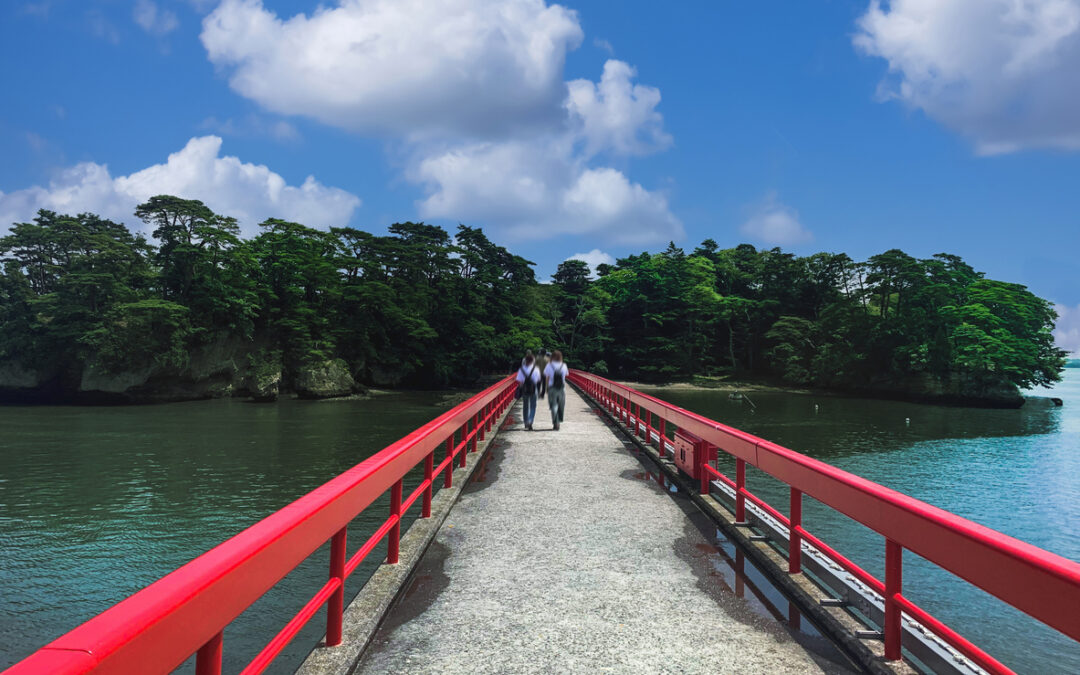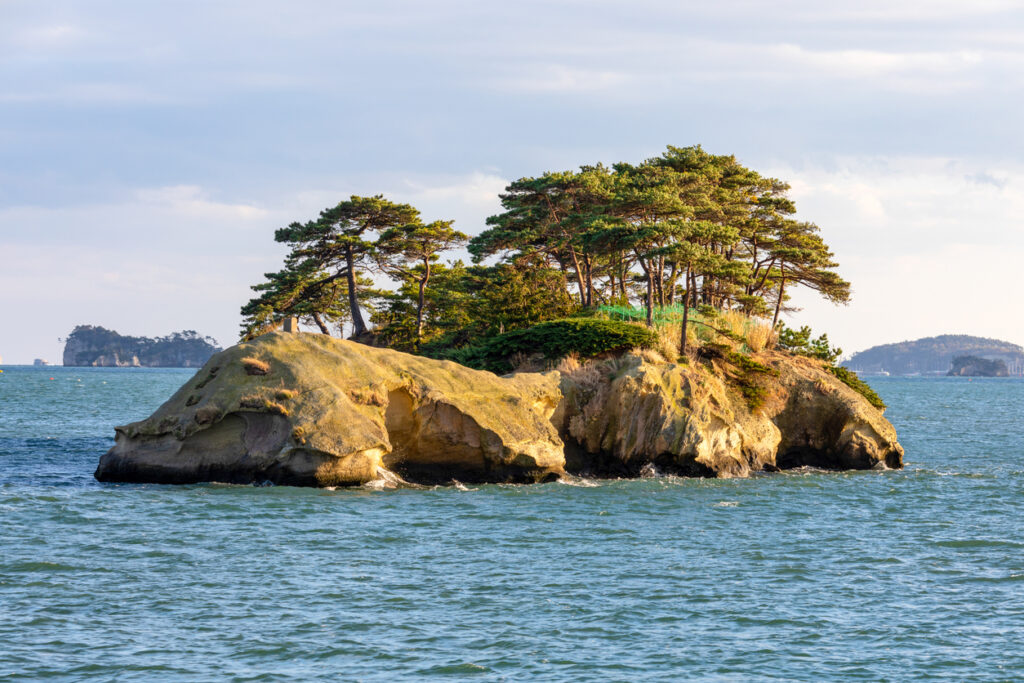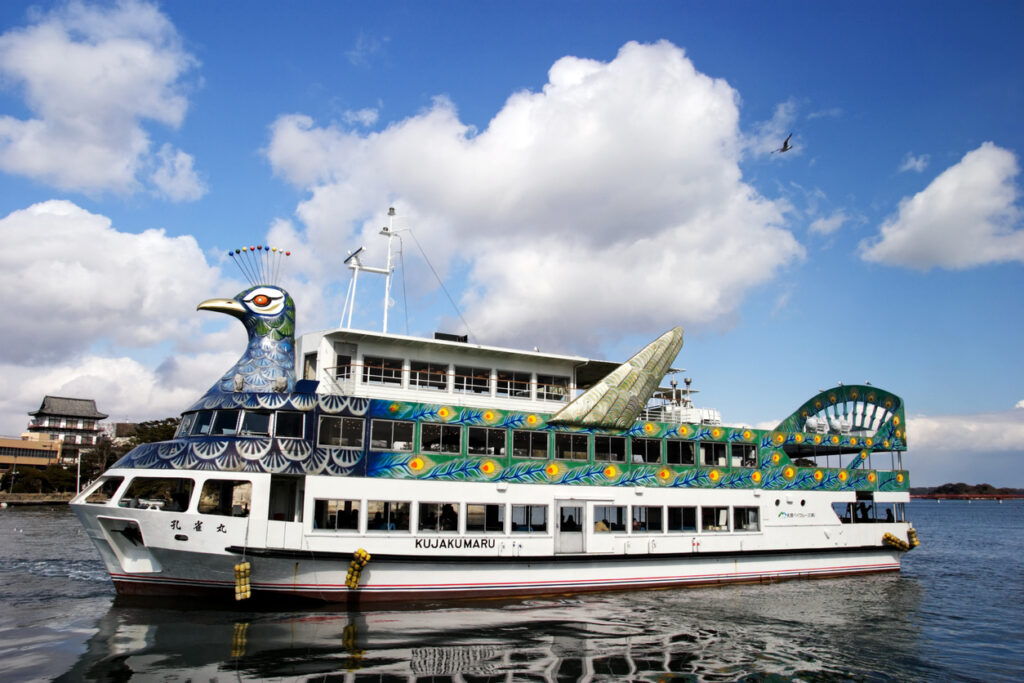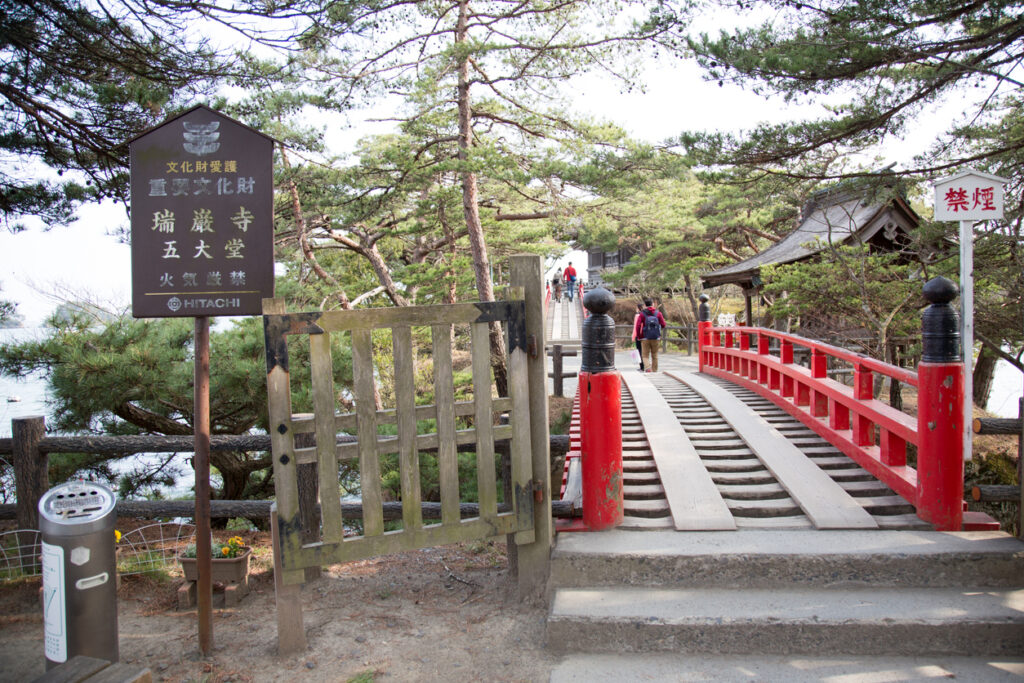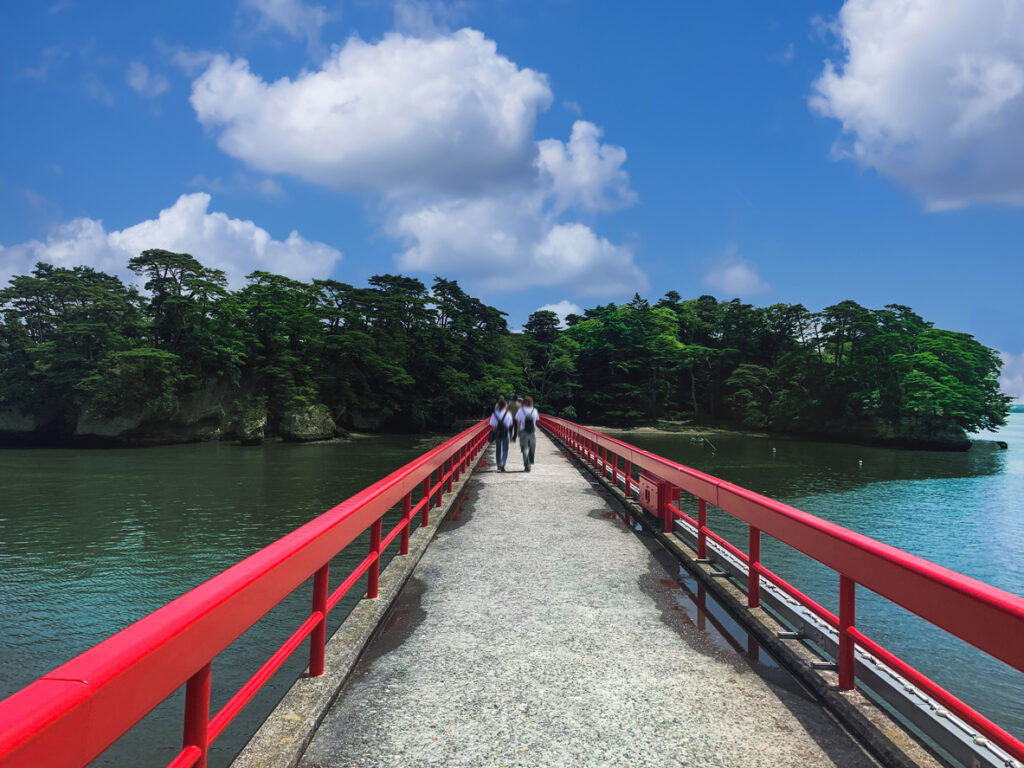Miyagi-ken, Honshu
松島 = Pine Islands
Located half an hour outside of Sendai, Matsushima is a city on the northeast coast of Japan’s Honshu Island. It’s known for the hundreds of forested islands that dot Matsushima Bay. The grand Zuiganji Temple was built in 1609. Nearby, Entsūin Temple is noted for its moss, rock and rose gardens, and for its colorful fall foliage. From the port, a curved red bridge leads to the wooden Godaidō Temple. Trails criss-cross the pine forest on Fukuurajima Island.
Matsushima Bay is dotted by pine-clad islets and is known for one of Japan’s three most scenic views. This area was hit by the earthquake and tsunami of March 11, 2011, but escaped major damage thanks to its protected location inside the island-dotted bay. Most tourist attractions, shops and hotels reopened within a few weeks or months of the earthquake.
I was fortunate enough to live in this area (a few train stops passed Matsushima) and every day on my train ride to and from school I would pass by this beautiful enchanted area.
Matsushima Bay
Go for Scenic Cruise
A good way to enjoy the bay is by sightseeing cruise and it just so happened that one of the girls on this trip was home staying with a family that owned one of the cruise companies. Cruises last around 50 minutes and cost between 1500 and 2000 yen. ($15 – $20)
Matsushima Bay
Fukuura Island (Fukuurajima)
Fukuura Island (福浦島, Fukuurajima) is one of the few pine-covered islands in Matsushima Bay that is accessible to the public. The island is reached via a 252 meter long, red painted bridge that costs 200 yen (round trip) to cross.
There is not much to see on the island besides plants and views of the bay. The island is a natural botanical garden with a network of pleasant walking trails. It takes about one hour to walk all the trails at a leisurely pace.
Matsushima Bay
Godaido Temple
This is an iconic island temple with bridges designed to sharpen the senses. It was first established in 828. Enshrined here are the statues of the Five Great Wisdom Kings. The original statues are now housed in the Zuiganji Temple Museum and only put on display at Godaido once every thirty-three years.
The temple building on the island today was constructed in 1604 by Date Masamune to celebrate the victory at Sekigahara, the decisive battle which brought an end to the era of civil wars.
The intentionally precarious red bridges connecting the island to the shore are known as sukashibashi. The gaps between the boards are deliberate, existing to compel worshippers’ concentration as they cross.
Please note that I have not received these products for free or at a discounted price in exchange for my opinion. There may be links that are affiliate links but at the time of posting this review, I have not received any monetary kickbacks.

